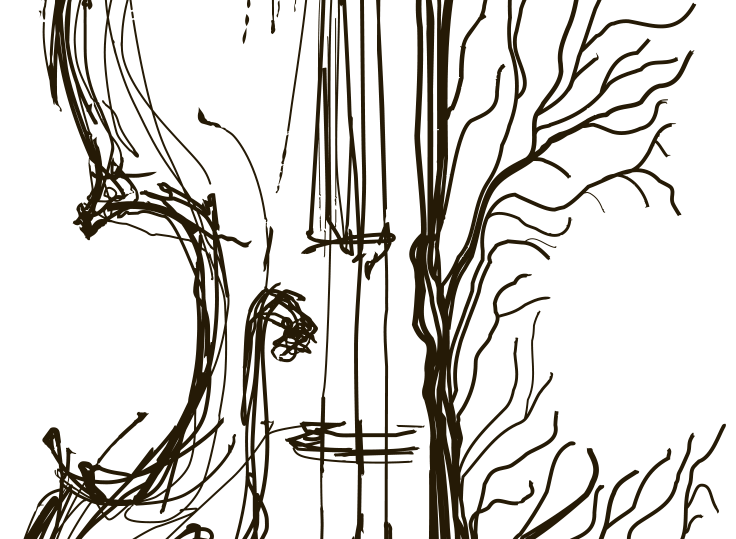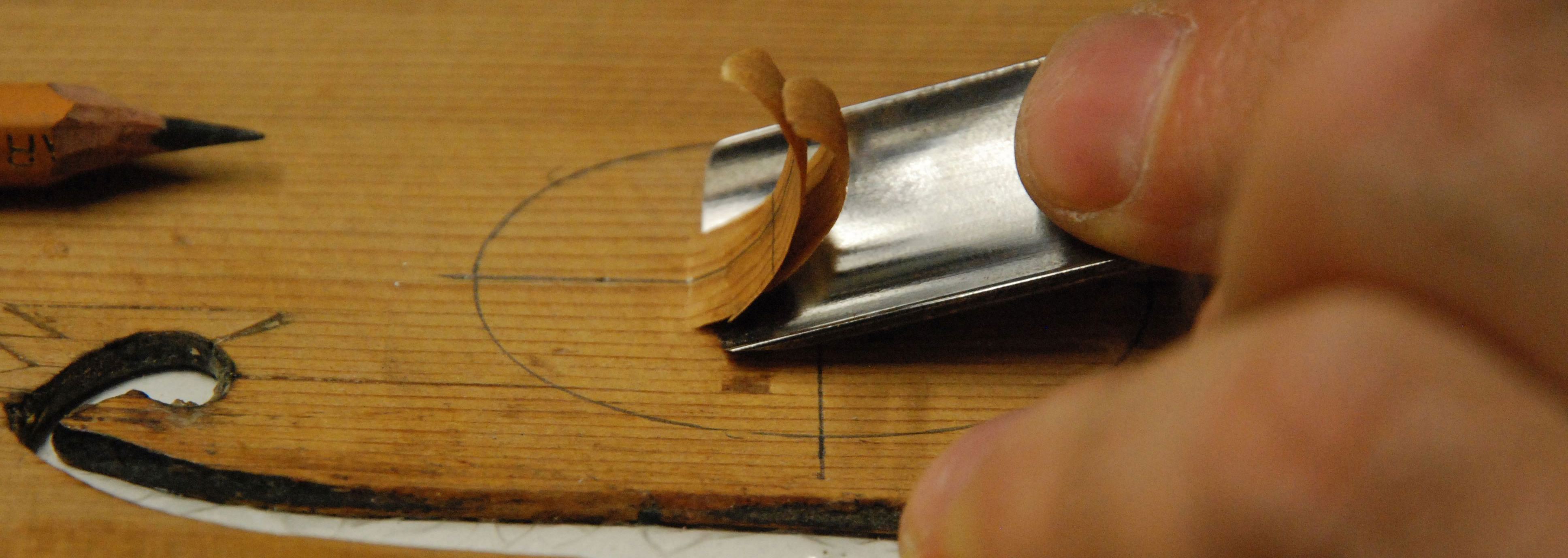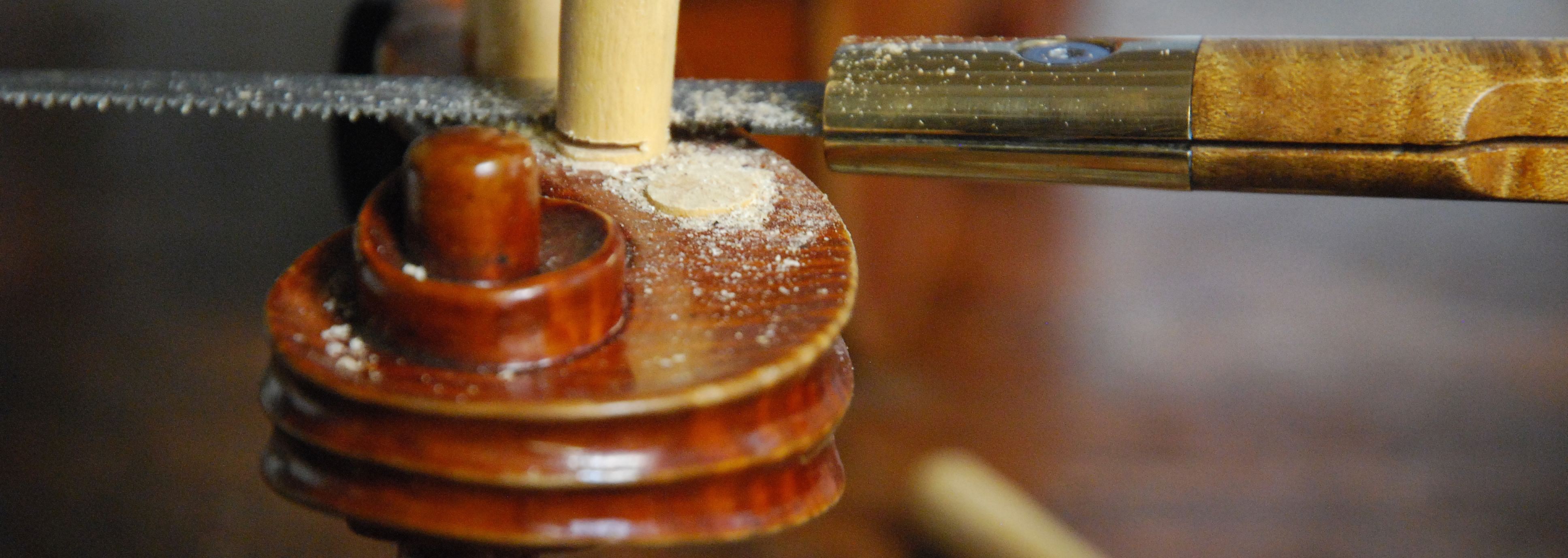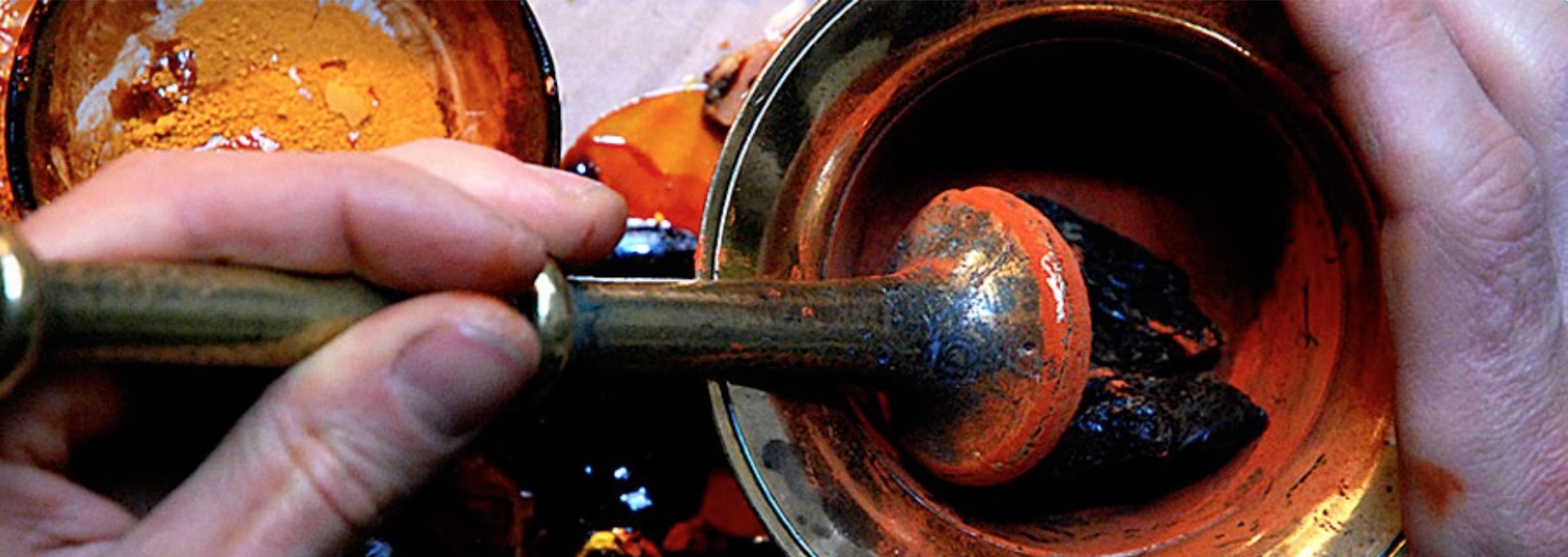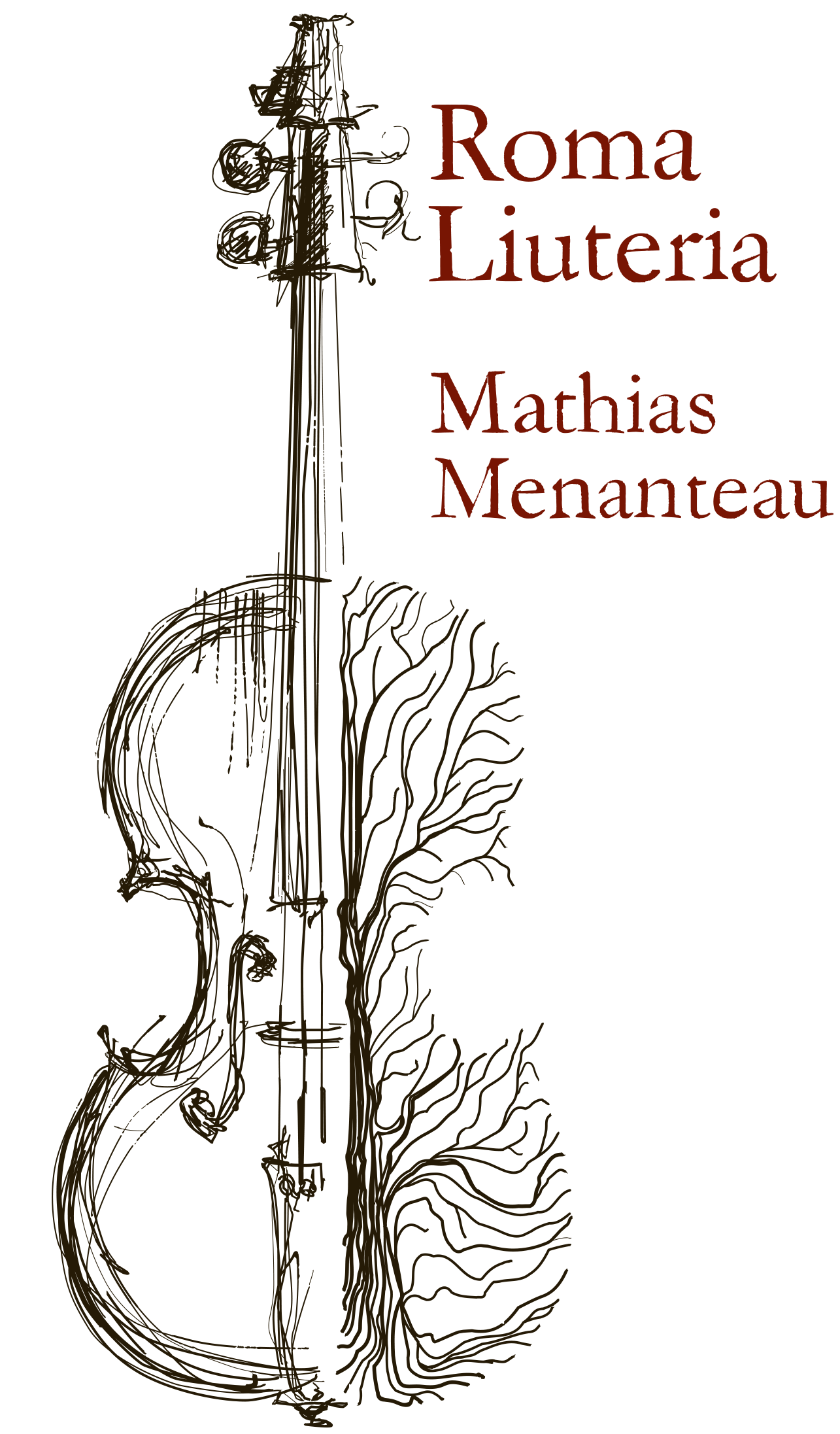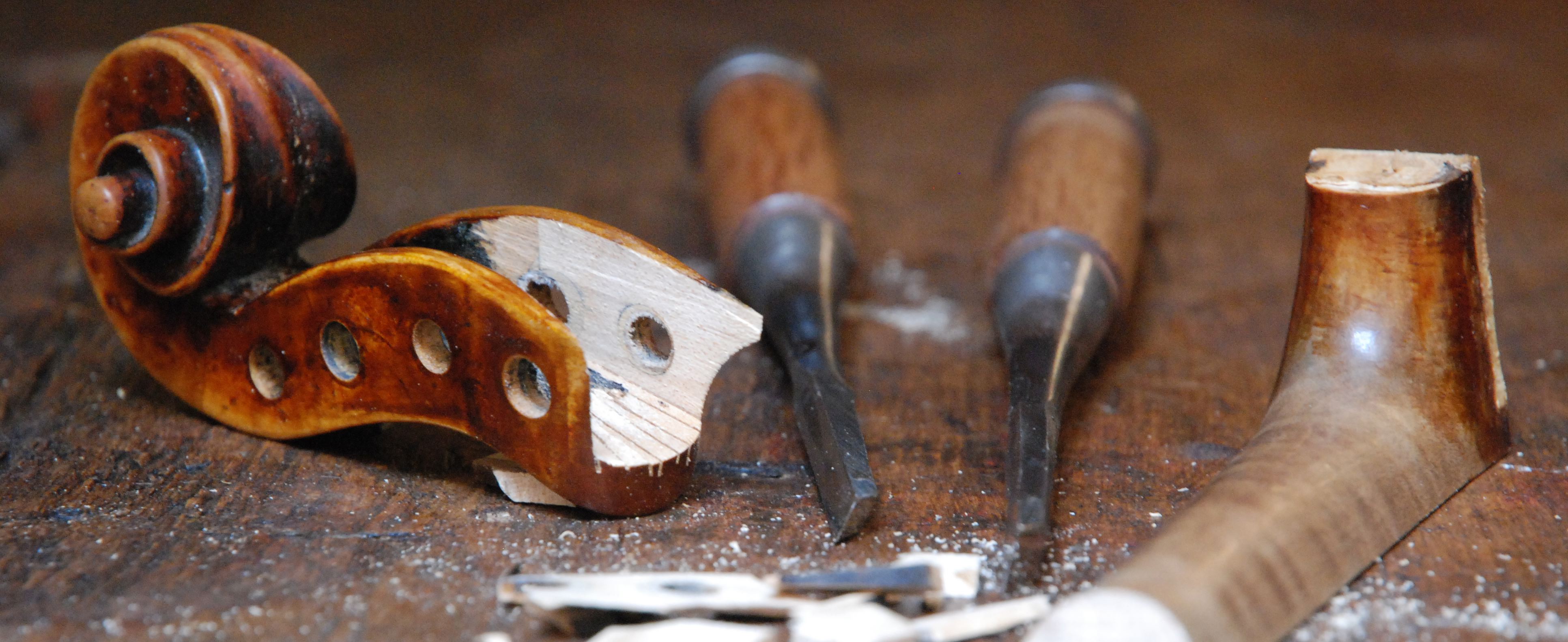RESTORATION
The restoration of musical instruments requires compliance with many rules, the first one being ethics. A conscientious restorer must always keep in mind that the safe conservation of an art piece depends not only on his or her abilities, but also, sometimes on his or her capacity to refuse to intervene.
Unlike construction, the discipline of restoration is not well defined. Who can say whether future technologies may help to repair a part of an instrument that today one would prefer to replace? Scientific discoveries such as the use of X-rays, which indicate the presence of galleries dug by worms, or dendrochronology, i.e. the science of dating wood, constitute new tools coming to enlighten the work of experts and restorers. Restoration is fascinating because it blends together both an ancient tradition (Jean Baptiste Vuillaume, a 19th-century Parisian violin maker, is considered the inventor of the neckgraft) and the most modern discoveries.
To learn more > Some techniques of restoration
M. Menanteau, Rome 2010
